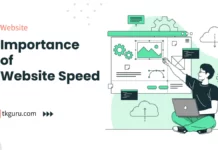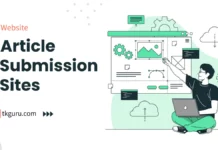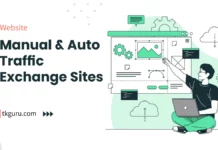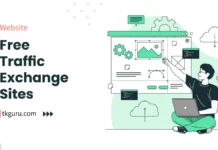Advertisements
Ratings
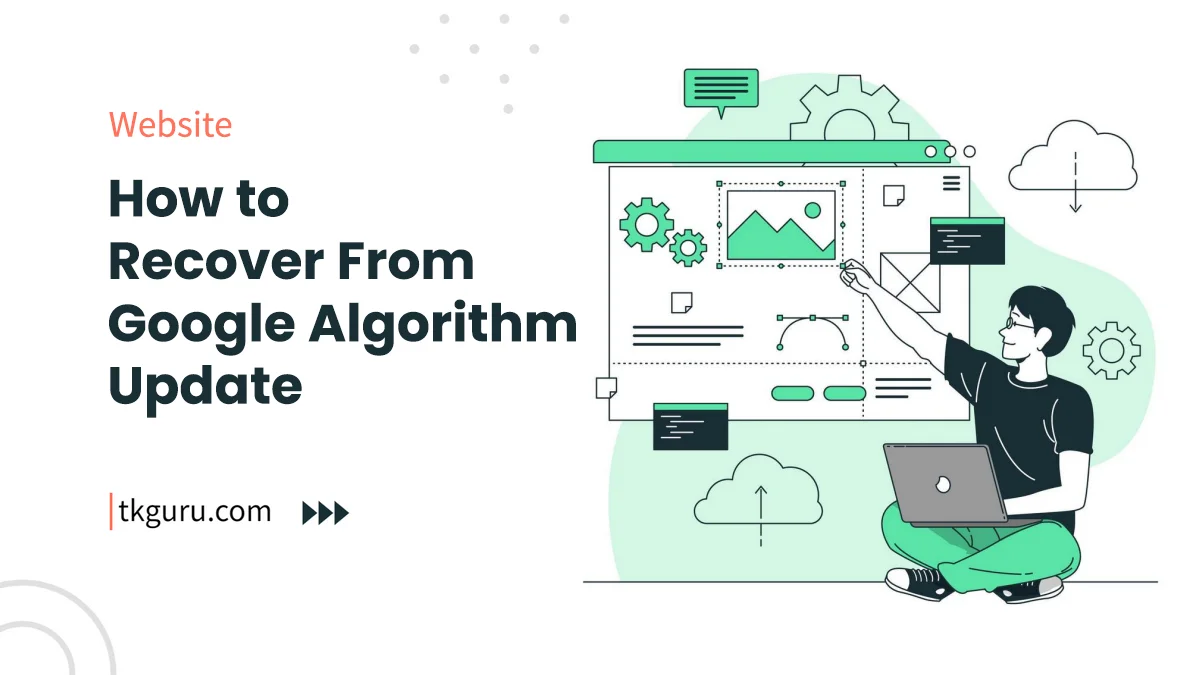
Recover From a Google Algorithm Update – In the dynamic landscape of search engine optimization (SEO), Google algorithm updates play a significant role in shaping website rankings and organic traffic.
When a website experiences sudden drops in rankings and traffic, it’s crucial to understand how to recover effectively from a Google algorithm update.
This article provides actionable strategies to help you navigate the aftermath of an algorithm change and restore your website’s search engine visibility.
Contents
1. Understanding Google Algorithm Updates
Google’s algorithms are intricate sets of rules that determine how websites are ranked in search results.
Algorithm updates are Google’s way of refining its search algorithms to deliver the most relevant and high-quality content to users.
Major updates, such as Panda, Penguin, Hummingbird, and BERT, have reshaped how websites are evaluated and ranked.
These updates are designed to prioritize quality content, user experience, and relevance.
Understanding the goals behind algorithm changes helps website owners adapt their strategies to align with Google’s evolving standards.
2. Signs of Being Affected by an Algorithm Update
Recognizing the signs of being impacted by an algorithm update is crucial for prompt action.
If you notice sudden and significant drops in rankings, organic traffic, and user engagement, it’s likely that your website has been affected.
Monitor your website’s analytics, search console data, and ranking positions to identify any unusual patterns.
3. Steps to Recover From an Algorithm Update
3.1 Assessment and Analysis
Before taking any action, conduct a comprehensive assessment of your website’s performance before and after the algorithm update.
Compare metrics such as organic traffic, keyword rankings, click-through rates, and engagement metrics. Identify specific pages or sections that have been most affected by the update.
Use Google Analytics and Google Search Console to gather data and insights into your website’s performance.
Consider using tools like SEMrush or Ahrefs for more detailed analysis of keyword rankings and backlink profiles.
| Metrics to Monitor | Pre-Update | Post-Update | Change |
|---|---|---|---|
| Organic Traffic | X visitors | Y visitors | -Z% |
| Keyword Rankings | A keywords | B keywords | -C% |
| Click-Through Rate | P% | Q% | -R% |
| Engagement Metrics | M sessions | N sessions | -O% |
3.2 Content Quality and Relevance
Content quality is a fundamental ranking factor, and algorithm updates often scrutinize the value your content provides to users.
Assess the quality, relevance, and uniqueness of your content. Make sure it aligns with users’ search intent and addresses their queries comprehensively.
Revise and enhance existing content to provide more valuable insights. Conduct fresh keyword research and optimize your content strategically, without overusing keywords.
Updating content based on user feedback and emerging trends can help restore its relevance.
3.3 Technical Audit
Technical issues can negatively impact your website’s performance and rankings. Conduct a thorough technical audit to identify and resolve issues that might have emerged post-update.
Check for crawl errors, broken links, page load speed, mobile-friendliness, and security vulnerabilities.
Use the following checklist to guide your technical audit:
| Technical Audit Checklist | Action Taken |
|---|---|
| Crawl Errors | |
| Broken Links | |
| Page Load Speed | |
| Mobile-Friendliness | |
| Security Vulnerabilities |
3.4 Backlink Profile Review
Backlinks play a crucial role in website authority and rankings. Review your backlink profile to identify low-quality or spammy links that might have triggered a penalty post-update.
Use tools like Google Disavow to disavow toxic backlinks that could be harming your website’s reputation.
| Backlink Profile Review | Action Taken |
|---|---|
| Identify Toxic Backlinks | |
| Use Google Disavow | |
| Build High-Quality Backlinks |
3.5 User Experience Enhancement
User experience is a pivotal factor in SEO and user engagement. Assess your website’s user interface, navigation, and overall design.
Ensure that your website is mobile-responsive and provides a seamless experience across devices.
Evaluate the user experience using the following factors:
| User Experience Evaluation | Action Taken |
|---|---|
| Mobile Responsiveness | |
| Page Navigation | |
| Design and Layout | |
| Speed and Performance |
3.6 Keyword Research and Optimization
With algorithm updates, keyword optimization should be approached strategically. Conduct fresh keyword research to identify relevant and valuable keywords that align with user intent.
Optimize your content naturally and strategically without resorting to keyword stuffing.
Use the following steps for effective keyword optimization:
| Keyword Optimization | Action Taken |
|---|---|
| Fresh Keyword Research | |
| Keyword Integration | |
| Natural Language Use | |
| Avoid Keyword Stuffing |
3.7 Authority Building and Social Signals
Algorithm updates often reward websites with strong authority and credible backlinks. Focus on building your website’s authority through high-quality, authoritative content that provides value to users.
Leverage social media platforms to share valuable content and engage with your audience.
Enhance your website’s authority through these actions:
| Authority Building and Social Signals | Action Taken |
|---|---|
| High-Quality Content Creation | |
| Authoritative Backlink Building | |
| Social Media Engagement |
4. Patience and Monitoring
Recovering from a Google algorithm update requires time and patience. Algorithm recoveries may not be immediate, and consistent effort is key.
Monitor your website’s performance using analytics tools and search console data. Regularly review your strategies and make adjustments based on the ongoing analysis of your website’s progress.
Conclusion
Adapting to Google algorithm updates is essential for maintaining and improving your website’s search engine visibility.
By understanding the impact of algorithm changes, monitoring your website’s performance, and implementing the strategies outlined in this article, you can recover from algorithm updates and restore organic traffic.
Remember that SEO is an ongoing process, and staying informed and proactive is crucial for long-term success.
Recover From a Google Algorithm Update FAQs
What is a Google algorithm update, and why does it affect my website's ranking?
Google algorithm update is a change or adjustment to Google's search algorithm, which determines the ranking of websites in search results. These updates aim to provide more relevant and high-quality search results to users. Your website's ranking can be affected because the changes in the algorithm may reevaluate and reassess the factors that determine search engine placement.
My website's ranking dropped after a Google algorithm update. What should I do?
If your website's ranking drops after a Google algorithm update, consider the following steps:
- Analyze the update: Understand the specific changes in the algorithm and how they might have affected your site.
- Review your content: Ensure your content is high-quality, relevant, and free from low-value or duplicate content.
- Improve user experience: Enhance your website's loading speed, mobile-friendliness, and overall user experience.
- Check for technical issues: Resolve any technical SEO issues, such as broken links, crawl errors, or duplicate meta tags.
- Build high-quality backlinks: Focus on acquiring natural, authoritative backlinks to your site.
- Monitor performance: Continuously track your website's performance and rankings, making adjustments as needed.
How long does it take to recover from a Google algorithm update?
The time it takes to recover from a Google algorithm update can vary widely. It depends on the severity of the impact, the changes you make to your website, and how quickly Google reevaluates your site. Recovery can take weeks to months, so it's essential to be patient and persistent in your efforts.
Can I prevent my website from being negatively affected by future algorithm updates?
While you can't prevent algorithm updates, you can take steps to minimize their negative impact:
- Focus on high-quality content and user experience.
- Stay informed about SEO best practices and algorithm changes.
- Diversify your traffic sources to reduce reliance on search engine traffic.
- Regularly audit your website for technical and content issues.
- Adapt to algorithm changes by making necessary adjustments promptly.
Should I seek professional help for recovering from a Google algorithm update?
Depending on the severity of the impact and your expertise in SEO, seeking professional help may be beneficial. SEO experts can provide in-depth analysis, recommend strategies, and implement changes to help your website recover. However, many recovery efforts can be done independently with the right knowledge and resources.
| Web Hosting | Website |
| WordPress | Google Adsense |
| SEO | Affiliate Marketing |
| Blogging | YouTube |
Recent Posts
- How to Recover From a Google Algorithm Update: Strategies for Restoring Organic Traffic
- The Importance of Website Speed: Why Faster Loading Times Matter
- Instant Approval Article Submission Sites: The Key to Swift Online Visibility
- Top 10 Traffic Exchange Sites: Boost Your Website Traffic
Related Tags
google algorithm update 2023, google broad core update, google search console, google algorithm update (july 2023), hit by google update, august 2018 google core algorithm update, google core update march 2023, google algorithm update june 2023,

